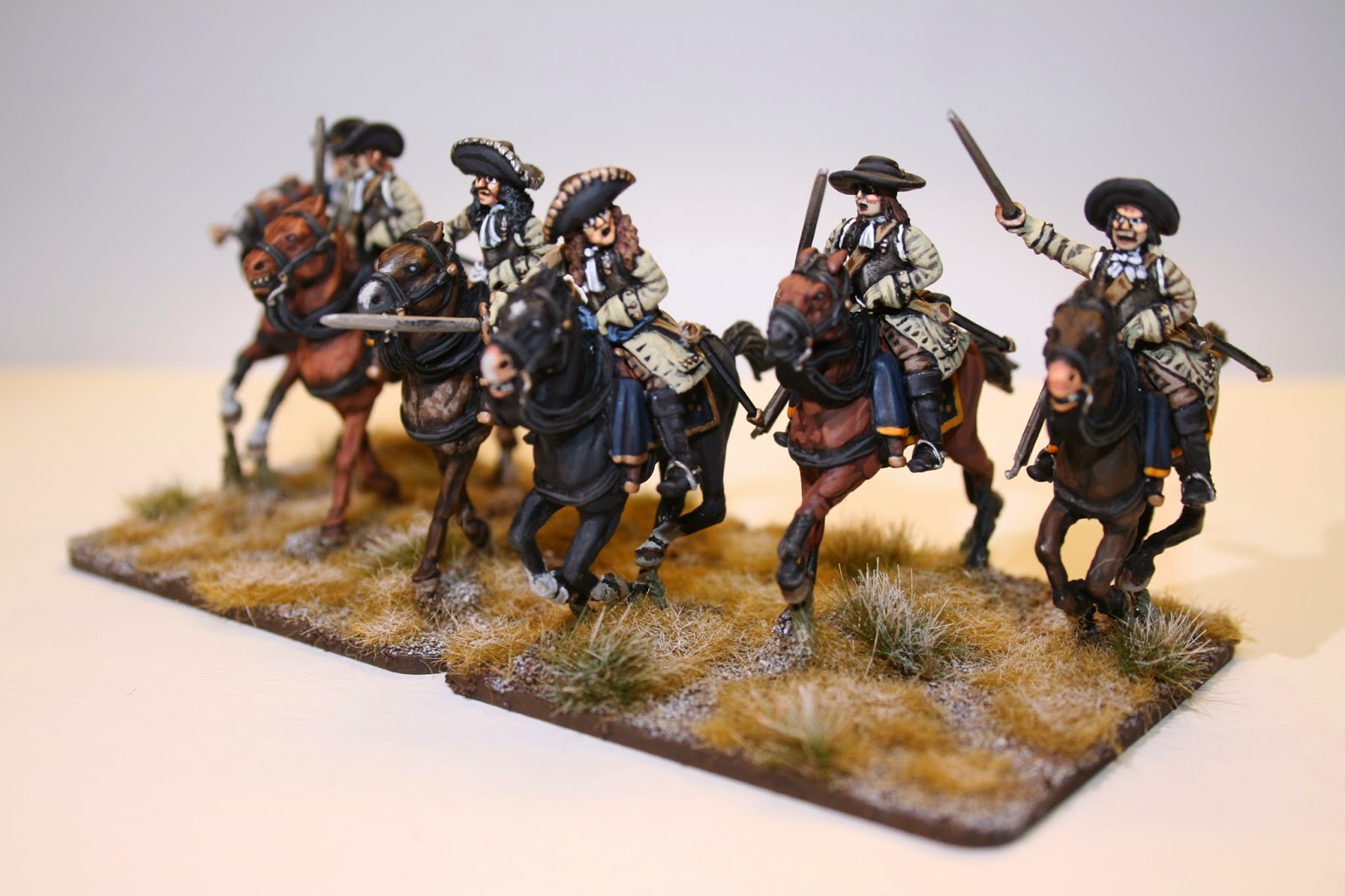 |
| Soren Christiansen's magnificent Swedish Lifeguard |
There is much conjecture over dress and equipment of the period 1670 - 1700 across all European armies. Typically the debate rages around;
| GNW Swede in a karpus hat |
When did troops start to fashion their hats into the three cornered shape known for posterity as a Tricorne? Evidence seems to exist that this style was known as early as the 1680s although it was not universally adopted. It is also clear that well into the 18th century soldiers and civilians continued to wear their hat brims wide or turned up on one or two sides. When did black hats begin to predominate and was that fashion convention universally adopted? The adornment of a tape or lace trim on the hat must have begun sometime but when? How robust was this and how easily did it fray and tarnish?
 |
| Danish infantryman in black hat |
Coats & waistcoats
Coat style, length and cut all present challenges. Pocket size shape and orientation too. Vertical? Horizontal? Scalloped? Saw toothed? Straight edged? What about buttons on cuffs or not? Vents in the coat back buttoned or not?
Sleeve length creates yet more problems. When did the turned up cuff move from just below the elbow to round the wrist? Waistcoats are often thought to be the cut down remnants of previous year's worn out coats.Was this always the case or did people have specific garments tailored? What about the colour... was it that of the new coat's lining or not? The Swedes of Karl XII turned back the skirts of their coats but when did this fashion begin and was it always followed? Did other armies do it as early as the Swedes?
 |
| WLOA80-87 codes as Danish infantry Weyer's Regiment |
| The Danish Footguards - Grand Alliance period |
With the introduction of flintlock musket technology the big question is when did people change from matchlock? What were the mixes of matchlock to flintlock? When did armies abandon the Thirty Years War style '12 apostle' bandoliers and adopt bullet bags on the right hip or little cartridge boxes on the front of the waistbelt? Who got bayonets and from what year?
 |
| Aalborgske Regiment - bullet bag equipment |
Similar conjecture exists around various aspects of cavalry dress and equipment. When did the riding boots become universally black? Who wore armour? When did the Swedes move away from the buff coat? What colour were pistol holsters and when did the cloth covers appear. Was this a universal trend or not? Did dragoons carry pistols? What shape were saddle cloth ends rounded or square? When did coloured saddle cloths with trim in a contrasting colour begin to appear?
| Swede 1678 Vuksic & Grbasic - True or false? |
Join me for the next part of the series where I will be turning mountains of unpainted lead into mountains of painted lead.
